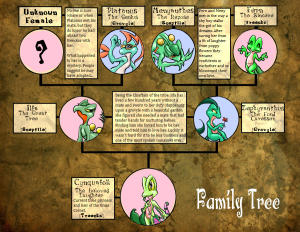Dealing with a stubborn child can be challenging. Address their mindset and provide directions, not orders, to avoid backfiring confrontations and louder refusals.
Parenting a stubborn child requires patience and understanding. Stubbornness in children can be managed with effective communication and teaching them self-governing skills. It’s essential to remain calm and consistent in your approach while maintaining empathy and respect for their choices.
Additionally, offering rewards for positive behavior and setting boundaries can help navigate difficult situations. Remembering your own limitations and seeking support when needed are also crucial in managing the challenges of parenting stubborn children. As a parent, embracing these strategies can pave the way for a positive and harmonious relationship with your stubborn child.
Table of Contents
ToggleUnderstanding Stubbornness In Children
What Stubbornness Looks Like
Stubbornness in children can manifest as a strong resistance to change or a refusal to comply with authority figures. It may involve repetitive and persistent behaviors such as refusing to follow instructions, displaying defiance, or engaging in power struggles. Children may also exhibit inflexibility, emotional intensity, and a strong will in pursuing their goals, leading to conflicts with adults and peers.
Common Misconceptions About Strong-willed Children
One common misconception about strong-willed children is that they are simply being disobedient or challenging authority for the sake of it. However, it’s important to recognize that their stubbornness is often a reflection of their strong sense of independence, determination, and a desire to assert their autonomy. Another misconception is that labeling them as “difficult” may lead to overlooking their positive qualities, such as resilience, leadership potential, and the ability to think for themselves.
Dealing With A Stubborn Child
Dealing with a stubborn child can be challenging, but with the right approach, it is possible to navigate this phase effectively.
Stay Calm
Remaining calm in the face of stubbornness is crucial to maintaining a positive and constructive interaction with your child.
Use Breathing Exercises
Utilizing breathing exercises can help you manage your own emotions and respond to your child’s stubborn behavior mindfully.
Focus On What You Can Control
Concentrate on what you can control in the situation, such as your response and attitude, rather than trying to force your child to comply.
Empower What They Can Control
Encourage your child to take ownership of decisions within reasonable boundaries, empowering them to exercise control over certain aspects.
Honor Their Choices
Show respect for your child’s choices and autonomy, even when they may conflict with your preferences, to foster trust and mutual understanding.
Take A Listening Approach
Adopt a listening approach to understand your child’s perspective and emotions behind their stubbornness, building a deeper connection.
Replace Anger With Empathy
Shift your response from anger to empathy, acknowledging your child’s feelings and validating their experience.
Avoid Bailing Them Out
Resist the urge to rescue your child from consequences of their stubbornness, allowing them to learn and grow from their choices.
Teaching Self-government Skills
Teaching self-government skills to a stubborn child is vital for their personal development and family harmony. By empowering children to make positive choices and take responsibility for their actions, parents can guide them towards becoming independent and self-disciplined individuals.
Common Mistakes Parents Make
- Issuing orders instead of providing directions.
- Reacting with anger and frustration.
- Overlooking the importance of consistent communication.
Effective Strategies For Teaching Self-government Skills
- Lead by Example: Demonstrate self-government behaviors and decision-making skills for your child to emulate.
- Encourage Decision-Making: Offer choices to help your child practice decision-making and learn the consequences of their choices.
- Open Communication: Create an environment where your child feels comfortable expressing their thoughts and emotions.
- Consistency: Establish clear and consistent guidelines to help your child understand expectations and consequences.
- Positive Reinforcement: Acknowledge and praise your child’s efforts and good behavior to reinforce positive choices.
- Empowerment: Provide opportunities for your child to take on responsibilities and tasks, fostering a sense of empowerment and self-reliance.

Credit: www.smileavenuefamilydentistry.com
Handling Difficult Behavior
Dealing with a stubborn child can be challenging, but with the right approach, you can effectively manage their behavior. Here are some key strategies to help you handle difficult behavior:
Do What Feels Right
Trust your instincts and do what you feel is best for your child and your family.
Be Consistent
Consistency is key in dealing with difficult behavior. Stick to your rules and consequences.
Avoid Overreacting
Avoid getting too emotional or reacting impulsively. Stay calm and composed.
Open Communication With Your Child
Encourage open and honest communication with your child to understand their perspective.
Focus On The Positive
Highlight and praise your child’s positive behavior to reinforce good habits.
Offer Rewards
Use positive reinforcement and rewards to motivate your child to exhibit desired behavior.
Avoid Physical Discipline
Steer clear of physical discipline and instead opt for positive discipline strategies.
Coping When You Feel Overwhelmed
When dealing with a stubborn child, avoid giving orders and instead provide directions. Trying to direct them can lead to resistance and more defiance. Understand that stubborn kids have their own mindset when it comes to listening.
In parenting, there are moments when you might feel overwhelmed while dealing with your stubborn child. It’s important to remember that you are not alone in this journey, and there are ways to cope with these challenges. Here are some strategies to help you manage your feelings of overwhelm and regain control:
Accepting Your Limitations
It’s crucial to accept that you have limitations as a parent. No one is perfect, and it’s okay to acknowledge that you may not have all the answers or be able to control every aspect of your child’s behavior. By accepting your limitations, you can take the pressure off yourself and focus on finding effective solutions.
Setting Boundaries
Setting boundaries is essential when dealing with a stubborn child. Clearly communicate your expectations and consequences for certain behaviors. Establishing consistent rules will help your child understand the boundaries they need to adhere to. By setting boundaries, you can create a structured environment that promotes positive behavior.
Resetting Expectations
It’s important to reset your expectations when dealing with a stubborn child. Understand that change takes time and effort. Instead of expecting immediate compliance, focus on small steps of progress. Celebrate the little victories and remain patient as your child learns and grows. By resetting your expectations, you can alleviate some of the pressure and reduce feelings of overwhelm.
Letting Go Of Control
Sometimes, it’s necessary to let go of control and allow your child to make their own choices within reasonable limits. Remember that your child is an individual with their own opinions and desires. While it’s crucial to guide and instruct, giving them some autonomy can help them develop their decision-making skills. By letting go of control, you can empower your child to take responsibility for their actions.
Finding Support
When you feel overwhelmed, finding support can make a significant difference. Reach out to friends, family, or a parenting support group for advice and encouragement. Sometimes, just knowing that others have faced similar challenges can provide comfort and reassurance. By finding support, you can gain new insights and strategies to help you navigate these difficult moments.
In conclusion, coping with a stubborn child can feel overwhelming at times, but there are strategies to help you manage these challenges. By accepting your limitations, setting boundaries, resetting expectations, letting go of control and finding support, you can navigate this journey with confidence and resilience. Remember, you are not alone, and with patience and perseverance, you can effectively deal with your stubborn child.

Credit: www.amazon.com
Surviving The Strong-willed, Stubborn Child
Dealing with a strong-willed, stubborn child can be challenging and exhausting. These children have their own ideas and are often resistant to authority and direction. However, with the right approach, you can navigate these challenges and build a harmonious relationship with your child. Here are some strategies to help you survive and thrive.
Preparing Yourself
Before addressing your child’s stubbornness, it’s important to prepare yourself mentally and emotionally. Remember that your child’s behavior is not a personal attack or a reflection of your parenting abilities. Stay calm and approach each situation with patience and understanding.
Giving Age-appropriate Choices
Strong-willed children crave independence and control. Instead of enforcing your decisions, give them age-appropriate choices to make. This empowers them and helps them feel heard. For example, instead of insisting on a specific outfit, offer them two options to choose from.
Avoiding Power Struggles
Engaging in power struggles with your child will only escalate the situation. Instead of trying to assert your authority, find common ground and compromise. Find solutions that satisfy both parties and avoid getting into a win-lose mentality.
Setting Firm Limits
While giving choices is important, it is equally crucial to set firm limits and boundaries. Clearly communicate the rules and consequences, ensuring your child understands the expectations. Consistency is key in enforcing these limits, helping your child understand the importance of following rules.
Teaching Compromise
Teach your child the value of compromise and negotiation. Encourage them to express their opinions and needs, while also helping them understand the perspectives of others. This will foster better communication and problem-solving skills, reducing stubbornness.
Listening To Your Child
Show genuine interest in your child’s thoughts and feelings. Give them the space to express themselves without judgment or interruption. By listening attentively, you validate their emotions and help them feel understood, which can reduce their stubbornness.
Showing Understanding
Demonstrate empathy towards your child’s struggles and frustrations. Let them know that you understand their point of view, even if you don’t agree with it. This empathy will strengthen your bond and make your child more receptive to your guidance.
Allowing Mistakes
Stubborn children often learn best through experience. Allow them to make mistakes and face the consequences within reasonable limits. This provides valuable learning opportunities and helps them develop personal responsibility.
Redirecting Attention And Using Positive Language
Redirecting a stubborn child’s attention and using positive language are effective strategies for guiding children to make better choices and cooperate. By diverting attention, parents can shift the focus away from negative behavior, while using positive and encouraging language fosters a supportive environment for the child.
Diverting Attention
When dealing with a stubborn child, diverting their attention can help redirect their focus and diffuse tense situations. Engaging the child in a new activity or introducing a novel object can shift their mindset and mitigate resistance. Additionally, offering choices or alternatives can also redirect their attention away from defiance towards a more productive and positive direction.
Options Instead Of Directives
Providing options rather than giving direct orders can empower a stubborn child to feel more in control of the situation, reducing the likelihood of a power struggle. For instance, instead of saying “Do your homework now,” a parent could offer the choice, “Would you like to start with math or reading first?” This approach encourages the child to make a decision while feeling respected and less confrontational.
Using Positive And Encouraging Language
Utilizing positive language and offering encouragement can shift the dynamics of interaction with a stubborn child. Instead of using commands, employing phrases like “I appreciate your cooperation” or “Thank you for helping with this” can reinforce positive behavior. Using affirming language underscores the child’s value and fosters a more empathetic and conducive atmosphere for communication and cooperation.

Credit: www.worksheet4all.com
Handling Stubborn Toddlers
Avoid demanding phrases with your stubborn toddler. Use words that encourage cooperation and mutual understanding instead.
Redirect your toddler’s attention from the source of conflict to a more positive and engaging activity to diffuse stubbornness effectively.
Dealing with a stubborn child requires patience and strategic communication. Fostering cooperation through positive language and diversion techniques can make a significant difference in handling challenging behaviors.
Frequently Asked Questions For Deal With Your Stubborn Kid
How Do I Deal With A Stubborn Child?
To deal with a stubborn child: 1. Give directions instead of orders, as they are more likely to listen. 2. Stay calm and avoid overreacting. 3. Set boundaries and be consistent. 4. Talk to your child and offer positive reinforcement. 5.
Seek support and take care of yourself.
What Do You Do With An Extremely Difficult Child?
To deal with an extremely difficult child, stay calm and use a listening approach. Empathy, understanding, and honoring their choices can help. Avoid giving orders and instead provide clear directions. Be consistent and talk to your child. Offer rewards and focus on the positive.
Seek support when needed.
What To Do When You Can’t Handle Your Child Anymore?
When you feel overwhelmed with parenting, take a deep breath and stay calm. Listen and empathize with your child’s emotions. Set boundaries, but empower them with choices. Seek support and remember to take care of your own well-being.
What Is The Hardest Age To Parent?
The hardest age to parent is often during the toddler and teenage years due to challenging behaviors.
Conclusion
Dealing with a stubborn child can be challenging, but with patience and understanding, it is possible to achieve positive results. Remember to stay calm, offer choices, and approach the situation with empathy. Setting firm but fair boundaries and letting your child make mistakes are essential steps in guiding them effectively.
By employing these strategies, you can navigate through the difficulties and foster a healthy and positive relationship with your stubborn child.

Mother of Two children. I’m a former teacher with a background in child development and a passion for Good parenting. I understand child development and know how to develop activities to help children learn and grow. Spare time, I enjoy spending time with my family, reading, and volunteering in my community. Read More








